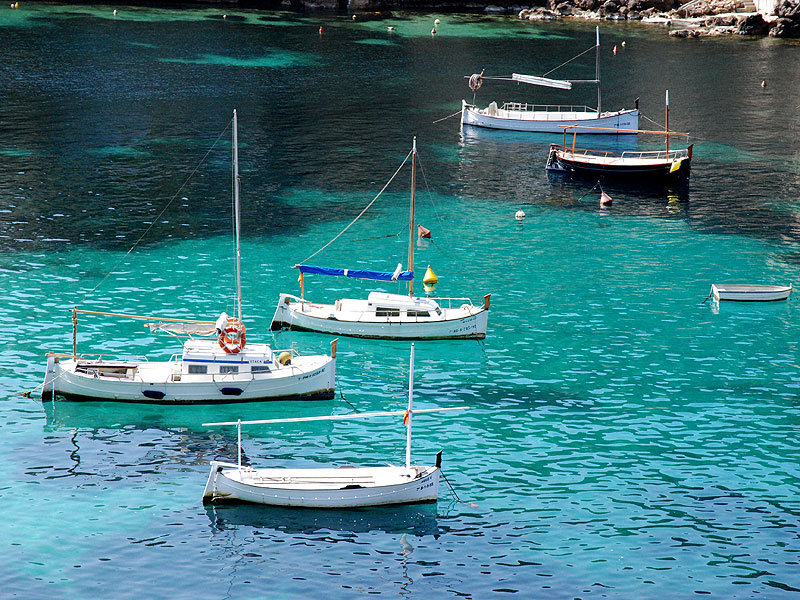
23 Sep The ‘Llaüt’, The Hallmark Of Ibizan Fishermen
Es Torrent wouldn’t be the same without its fishermen, who provide us with the best fresh fish and seafood, thanks to ancient techniques that have been passed from generation to generation. Their fresh catch is the starting point on which we build our cuisine, but they also have a prop on which they base their work. They have their fishing nets, fishing lines, corks and, above all, their traditional fishing boat: the llaüt.
This is a traditional boat in a large part of the Mediterranean coast, which in the past was used both to transport goods as well as for catching fish and shellfish. The llaüts are also responsible for much of the so characteristic coastal landscape of Ibiza, with all those coves dotted with fishermen huts. Which are the shelters built by fishermen where they keep their small fishing boats during storms.
Today we can hear the echo of the engines of the llaüts while following the coastline in front of Es Torrent and the coast of Es Cubells. However, in the old days, they only used the sails. These boats are known for their resistance and stability. During difficult times many fishermen dared to cross the Mediterranean with them, when there was still no engines, to the Algerian coast. There they smuggled sugar, coffee and other shortage products on the island.
Even today, the best-preserved llaüts are handmade. They were built by shipwrights, which in Ibicenco language are called ‘mestres d’Aixa’. The wood used to built the llaüts is usually native pinetree of the island, which is carefully chosen according to the size of each piece and is then left to dry for a year. And actually the llaüts are an adaptation, usually on a smaller scale, of the ancient lateen xabec.
With the passage of time they evolved and were adapted to the characteristics of its use. Therefore, in the fishermen coves we find smaller llaüts without a cabin, suitable for shallow depths of water and perfect for following the coastline and fishing. Its hull is hollow and accessible from the deck through the so-called “cuarterones” (quarters), which are rectangular wooden tops under where the engine is located and the fishing equipment and other accessories are kept. The llaüts that sail further into the sea, however, often have a cabin, a greater keel and its shape is slightly more stylized and streamlined, to face adverse weather. The llaüt is without doubt one of the most characteristic elements of the traditional lifestyle of the Ibicenco people. A tribute to the culture of fishermen and sailors of the Pitiusan islands.










No Comments